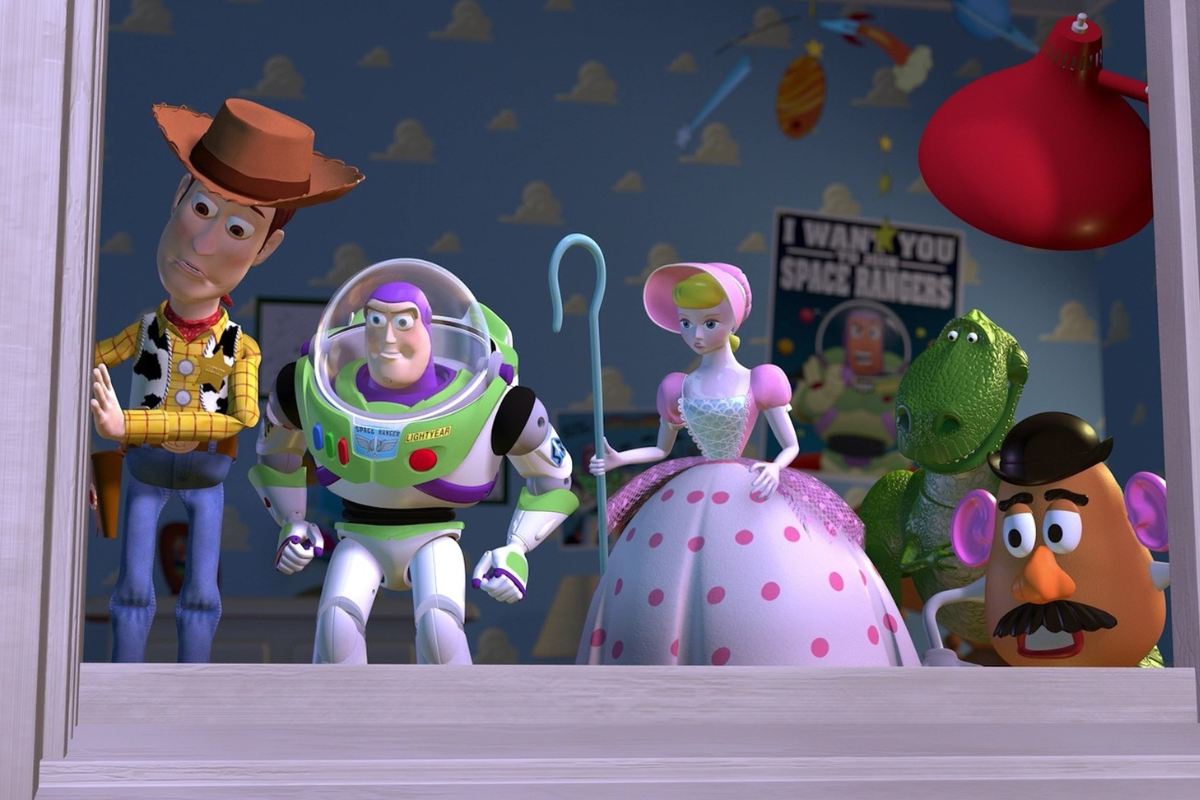IT DEPENDS: How the Bechdel Test Should Be Used
Christopher Schiller explains what the Bechdel-Wallace Test is to different parties and how it should (or shouldn’t) be used as a touchstone in this industry.
Christopher Schiller explains what the Bechdel-Wallace Test is to different parties and how it should (or shouldn’t) be used as a touchstone in this industry.
Christopher Schiller is a NY transactional entertainment attorney who counts many independent filmmakers and writers among his diverse client base. Follow Chris on Twitter @chrisschiller.
A quick perusal of the trade headlines will easily show that diversity is a hot topic in Hollywood these days. And gender equality is one of the hottest of the topic areas involved. Lots and lots of talk and statistics bandied about, used as shaming fodder, leverage or excuses depending. It is an all out war of words (and to a lesser extent, actual actions) from both sides and there are many go-to weapons used in the battle. One of the higher profile ones is the Bechdel-Wallace Test (from here on out interchangeably referred to by its more common but less accurate moniker, the Bechdel Test.)
We’ve covered the Bechdel-Wallace Test before in previous columns. You can follow the links to be reminded of what was said, but, in short its a gender specific test of … something. What that something is kind of depends on your perspective. And that’s what this column is all about, what the Bechdel-Wallace Test is to different parties and how it should (or shouldn’t) be used as a touchstone in this industry. Our industry is awash with short-hand terms and knowing what the other side means when they use one – especially when that use differs from your own – will put you miles ahead in getting where you intend to go.
Quick Bechdel Test refresher
The actual test, a variation of Virginia Woolf’s observations of the literature of her time and quoted from the long out of print Dykes to Watch Out For (1985) comic as The Rule (with thanks to Liz Wallace):
“I only go to a movie if it satisfies three basic requirements. ONE, it has to have at least two women in it… who, TWO, TALK to each other about, THREE, something besides a MAN.”
That’s it. That’s the entirety of the original test. Variations abound but the heart of the matter is still the simple concept. But what that concept means depends on the goals and reasons of those using the test.
What the Bechdel Test meant to Bechdel and Wallace
Not to put words in another writer’s mouth, but I would venture to say that Alison Bechdel and Liz Wallace did not set out to create an all inclusive gender empowerment test for changing Hollywood. From what I can piece together of the origination it derived organically in social discourse (aka chatting) as a natural evolution of the articulation of a problem existing long before Virginia Woolf noted the issue in literature in her 1929 essay A Room of One’s Own. Social commentary as part and parcel of a humorous slice-of-life comic strip element is just one part of a larger discussion of lesbian social issues. The entire test exists on a single page of the comic that ran for 25 years.
With the long, and mostly unsuccessful struggle that Bechdel has had over the years of attempting to fully attribute Wallace’s name to the test it is clear neither woman has control over how the test is interpreted and used anymore.
What the Bechdel-Wallace Test means to a writer
“Great. Another rule to follow.”
As with all supposed screenwriting rule, it’s not so important to blindly follow the rule as it is to know why the rule exists and understand the intention behind it. Consider how the rule originated, it was just a way for people to decide between the films on the marquee. Which one was going to be interesting enough, with characters that were realistic and recognizable from the audience member’s perspective to potentially be engaging and worth their time and money. Creating a film that is engaging and interesting to the audience is your goal already, right? So the “rule” just gives you a checklist to make sure you are sticking to your own goals.
It is easy to throw in a scene between a couple of characters that satisfies the test on face value. In fact, I have watched episodes of bad television programs that did just that – for example, in an episode of the recent CW series No Tomorrow they used an incongruous scene between two women at a bar who talk about something inane and then ordered another round of drinks. The waiter took the order, “Two more Bechdel’s coming up.” I’m not saying that if they put more effort into living up to the spirit of the test instead of the letter the showrunners might have had their back end of their first season picked up. But it couldn’t have hurt. (And if they’re looking for an apocalyptic ending in case they don’t get renewed, I’d suggest looking back to 1980s TV’s Sledge Hammer!’s first season ender for inspiration.)
The Bechdel-Wallace Test exists simply for the reason that it is a seemingly easy test to pass and yet so much entertainment fails even that. If a writer is going to be intriguing the audience and creating believable, realistic characters living in a world that reflects the one around us, the test should be an important one to pass. And if you’ve created believable characters you can easily answer one of the questions that producers are finally starting to ask on a regular basis.
What the Bechdel Test means to a producer
“Does it pass the test?”
Producers bring their own viewpoint to the test. From their business perspective, passing the Bechdel hurdle means the product might be more marketable or at least, the theory goes, won’t be shut out of potential audience demographics. It’s a box on a long list of tick boxes that the producer can check off on the road to eventually selling the final film. If a film doesn’t pass the Bechdel Test it’s not a show stopper for a producer as long as they have lots of other boxes checked. And which boxes are available to compensate vary by genre.
If it’s a big star driven summer blockbuster action fare, they may not even remember to ask the question. If it’s a low budget, tear-jerker indie, it might be one of the only things going for the film. If it’s a comedy, checking the box might even be a detriment – unless the conversation they have is funny. High brow comedy is easier to accommodate the test. For other comedy styles, well, it’s hard to make a dick joke without reference to man.
Of course, these are stereotypical and shallow interpretations of what a producer is looking for chosen mostly for the humor. In truth, producers vary as much as writers. There are lots of them that care about story and character development and the Bechdel-Wallace test is an important asset to those. Of course, if those scenes will also make the film more attractive to buyers, it couldn’t hurt. Because in the end, even the most craft centric, creative friendly producer has to get the money to make the film and get it distributed. And that’s where the perspective of the studios change the definitions again.
What the “Test” means to a studio
“See? we’ve got that one scene that passes the test. We’ve done our bit.”
For studios, the Bechdel test results for a single film aren’t going to change the impression the marketplace has of the studio that much. As long as within the slate of films they make they have “enough” lip service paid to the cause, a single film’s lack won’t matter (as long as the producer selling to them has ticked more boxes they like.) It might even be the case that the studio would seek out female friendly fare to balance their books, so to speak, especially if they’ve had a run of testosterone laden product and someone important noticed. That last bit is key. Without it, the studio usually only cares that they make money in the aggregate on all the films they produce.
For the studio that produces a wide variety of works, each with a varying degree of attraction to different audiences, as long as there isn’t a noticeable effect on their box office they’ll not likely change their attitudes or ask questions as they head to the bank.
But audience attitudes do change and a savvy studio will keep its finger on the pulse of those changes and try to change in step, or at least not to many steps behind, if the winds start to shift.
What it means to an audience
“…?”
What the audience thinks is important. What they act on even more so. If the audiences keep coming to the movies regardless of gender treatment, then there’s little impetus to change things. But if enough people stop grumbling as they pay for their tickets and start choosing more balanced films to watch, everyone will start to notice and hopefully change. It is all up to the audience. And how they make those choices are becoming more informed every day.
Adding to the Bechdel-Wallace Test, other resources that assess the realistic female treatment in films are starting to surface.
F-Rating first appeared at the Bath Film Festival in 2014 as an advancement to the Bechdel and its more direct implementations like the A-rating film system in Swedish cinema. An F-rated film has the characteristics of being directed by and/or written by a woman and/or features significant women on screen in their own right.
These types of classification systems are a time honored way of bringing attention to an issue and getting the movie industry to take notice. Few people remember that the MPAA, the film rating board that hands out the Gs, PGs, Rs and NC-17s, is an independent group voluntarily abided by the studios to get their films in cinemas with less hassle. Popular rating systems tend to get noticed.
And in another spirit of copying as the sincerest form of flattery, The Black List, which lists the best un-produced screenplays that make the rounds of Hollywood each year has a reflection. The Bitch List is a list of the industry’s most liked Bechdel Test passing, un-produced screenplays. And a film festival has been celebrating produced screenplays that meet these criteria at the Athena List Film Festival.
The Bechdel Test means change is in the air
There are more and more ways for audiences to take note and make discerning choices. So a savvy writer would be wise to pay attention to all the tests that help them create an attractive product in the marketplace that also allows their scripts to be stronger and more realistic in their character portrayals to boot. Knowing how those tests are viewed by the different players in the game and acting accordingly is just smart craft.
Will knowing all the different perspectives involved make a difference in you being a success? As always, it depends.
Screenwriter Contracts DecodedUnderstand Common Screenwriting Contract Terms so
You can Sign Your Contract Confidently
Christopher Schiller is a NY transactional entertainment attorney who counts many independent filmmakers and writers among his diverse client base. He has an extensive personal history in production and screenwriting experience which benefits him in translating between “legalese” and the language of the creatives. The material he provides here is extremely general in application and therefore should never be taken as legal advice for a specific need. Always consult a knowledgeable attorney for your own legal issues. Because, legally speaking, it depends... always on the particular specifics in each case. Follow Chris on Twitter @chrisschiller or through his website.







